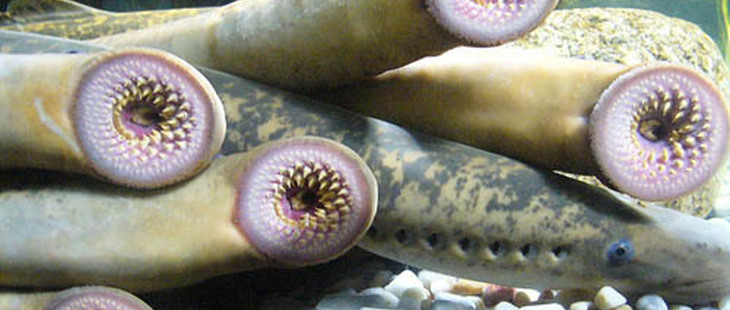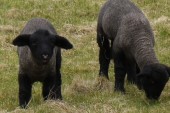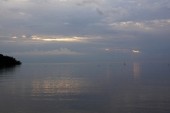
 A previous invader, the Lamprey eel.
A previous invader, the Lamprey eel.
Thanks to the emerald ash borer, the city forecasts there won’t be a single healthy ash left standing in Toronto by 2017. But this beetle-borer is only the latest invasive species to cause us headaches; we’ve already had the Asian longhorn beetle and before that international shipping brought the lamprey eel and zebra mussel to Lake Ontario (the latter of which is still a problem).
So what’s a city to do? The Toronto Standard called Dov Sax, an expert in invasive species at Brown University, for some advice.
“The term invasive is a loaded word, no one wants to be invaded,” Sax says. “There are invasive species that can cause economic loss and real damage to ecosystems. The problem is when people don’t think it through in particular case can lead to a lot of wasted time and money.”
Sax says some species don’t necessarily destroy local species and a few can even help out. For example, after the native cottonwood disappeared from the southwestern U.S. due to water shortages, it was the invasive salt cedar that provided habitat in its absence. Could the emerald ash borer have an upside?
“Probably not,” Sax says.
With the city footing most of the cost of removing and replacing ash trees and public property and home owners having to deal with their own fallen ashes, the emerald ash borer hasn’t found any defenders. Replacing the trees might be an opportunity, according to Sax.
“You’d want to think about it from an exotic species perspective and a climate change perspective. For a place like Toronto, you may want to plant some trees that have adapted to pests from farther south.”
He says this has already been the case with the forestry industry in British Columbia, where the rules have been changed so seedlings from the south can be included in their 80-year crop rotation.
While pests from Asia and Europe get most of the bad press, Sax says climate change is leading to more species going “astray.” The North American-native bark beetle is devastating mature trees in the western U.S. and British Columbia.
Beth McEwen, a manager of urban forest renewal for the city, says the ash trees will be replaced to avoid creating a vulnerable monoculture that could be devoured by another exotic species.
“We can be proactive about what we allow to replace the ash, because if we aren’t proactive we’ll end up with Norwood maple, salt cedar, European buckthorn and a lot of other invasive species replacing them in our natural forest.”
McEwen says she distinguishes between introduced and invasive species.
“I think you have to look at what the impact that tree is having on other species. I’m not absolutely against introduced species.” She says some plants, like ginkgoes, contribute to the “palette” of the landscape, but others like the Norwood maple choke the understory of the forest — even though they grow well in harsh urban conditions.
Sax says it’s obvious some species, especially those that have gone astray, should be managed but that each exotic should be considered on its own. This is part of the difficulty for city officials like McEwen, they have no way of really knowing where the next threat will come from.
“Every invasive species is a different story,” she says, “A truck may have passed through Toronto and left [the emerald ash borer]. So there’s a limited amount we can do to stop that from happening.”
She adds it’s important that people know ways of preventing the further spread of invasive species — like not taking firewood from homes in Toronto, where the emerald ash borer may be hiding, to a vulnerable place like cottage country. It can take a lot less than the global forces of international shipping and climate change for invasive species to spread.














